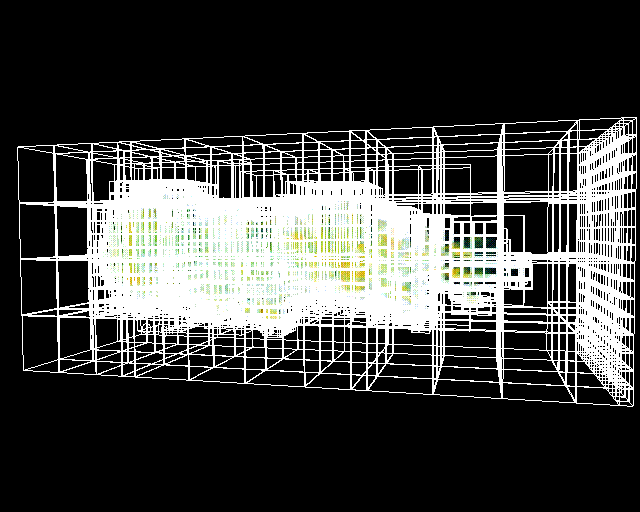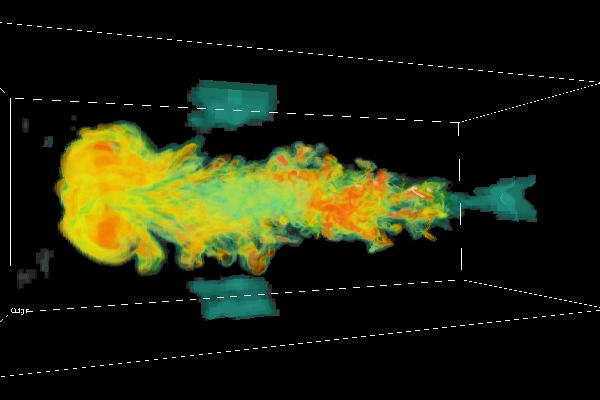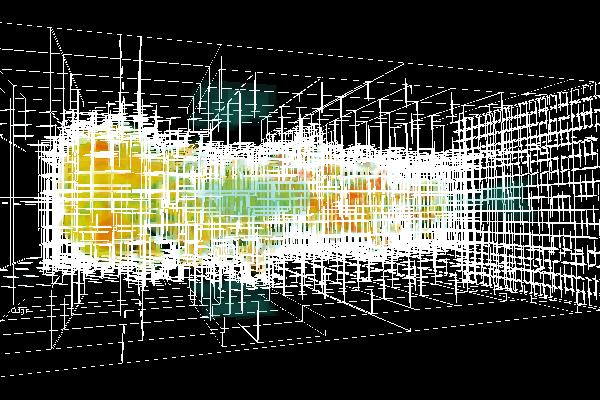|
Sample data provided by John Bell & Vince Beckner, CCSE, LBNL/NERSC.
Data stored on DPSS at LBL, Visapult back end run on CPLANT Alpha/Linux
cluster at SNL-CA, viewer run on a Solaris Ultra 60 at LBL.
|
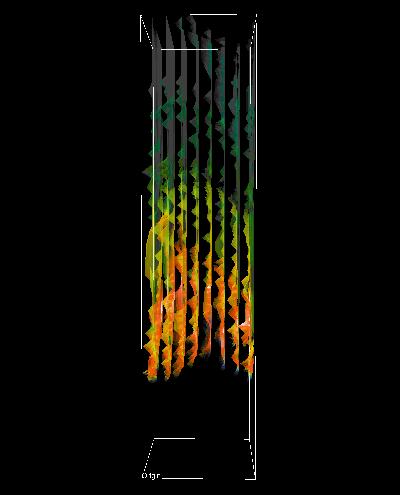
|
The side, or edge-on view shows how the elevation maps are used to
modify what would otherwise be a single flat quadrilateral. The
offset maps prove effective in extending the useful range of
interactive transformations - before the visual fidelity of the
IBR assisted volume rendering begins to degrade. The nominal
range of motion is confined to a cone with a 32-degree apex,
as claimed by Crawfis et. al. in the original IBRAVR paper.
|
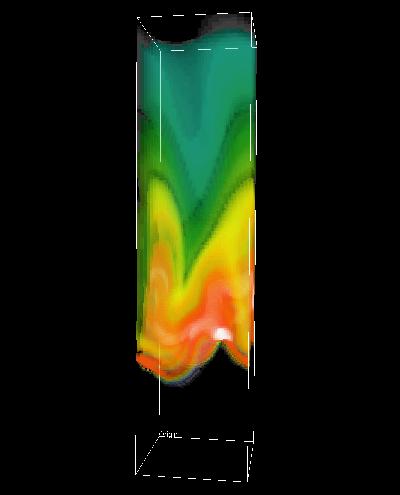
|
The same data, but viewed from the front.
|
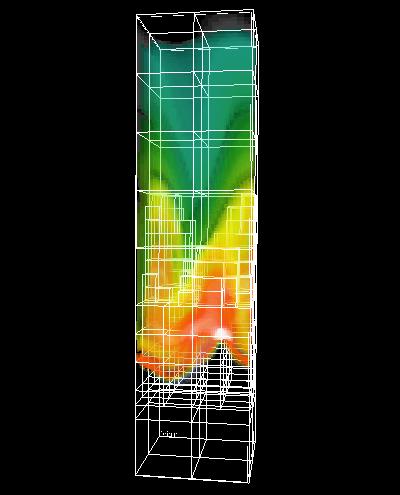
|
The same data, but with adaptive, heirarchical grids included.
|


